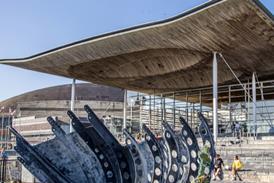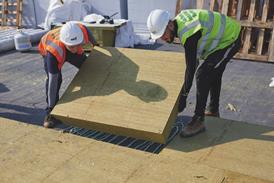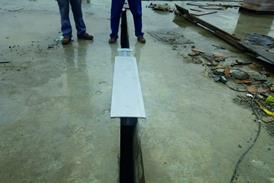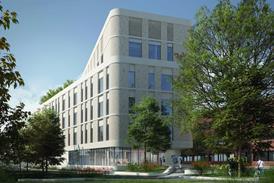However, once around a table, setting an agenda has been more difficult. This is because of the size, diversity and lack of experience of the client bodies. Most include representatives of local community and voluntary organisations, schools and further education colleges, housing associations, businesses, local authorities and public agencies. According to consultants, the different and often conflicting priorities of the representatives make it hard for them to reach consensus. With only £50m to rehabilitate neighbourhoods of between 1000 and 4000 homes, many partnerships have made it a priority to tackle crime and unemployment before refurbishing or replacing housing.
The pathfinders have also struggled to find resources to publicise the New Deal and to engage a suspicious and apathetic wider community in the process. Paul Grover of the Architecture Foundation feels that a major challenge for those involved in the New Deal is to enthuse the people it is aimed at: “The feeling is that £50m is not going to go very far over 10 years. If this money is not going to mend my leaking roof, then why should I bother talking about education and health?”
Two early beneficiaries of the New Deal, the Shoreditch New Deal Trust (which received £37.4m last December) and the Aylesbury Estate in Southwark (which received £56m in January), both recently tendered for new partners to take forward their masterplan options. Both have had difficulties deciding how best to spend the funds and both have opted to change their development partners in phase two. HTA Architects director Ben Derbyshire, who helped draw up the original masterplan options for the Shoreditch New Deal Trust, outlines the early problems on the project: “The partnership has to decide at the outset what its ‘shared objectives’ are and it evaluates masterplan options in relation to these. But if it has only just come together, it does not know what the most important criteria are. The DETR does not allow pathfinders enough time to decide what the most important criteria are and to develop a hierarchy of leadership.”
He adds that some partnerships’ lack of experience in working in a corporate structure made decision-making laborious. This has resulted in New Deal partnership boards working extremely long hours, including most evenings, to work out their agenda.
“In an area where you can’t get a decent board of governors for a local school, it is difficult to find a group of people capable of taking responsibility and discharging it. People are not used to the idea of having short, concise, high-level meetings to take strategic decisions, while delegating the detail to other divisions,” says Derbyshire, who had observed “enormously long meetings ranging between high-level strategic decisions on housing stock transfer to whether to do anything about the scout hall lavatory”.
Tackling community apathy
From Shoreditch to Southwark to east Manchester, the story is the same: local community group leaders have met almost every night to meet deadlines in the New Deal funding schedule.
Jean Bartlett, chair of the Aylesbury Plus Community Forum, says she has had meetings almost every night for the past six weeks. “We’ve set up working groups for health, education, employment, crime, community management, and we’re just now setting up an NDC board. On top of this, I run a mothers and toddlers group, and it’s all voluntary.” She says that, although she had gained lots of experience, she is “stressed out”.
Bartlett adds that few residents are enthusiastic about the New Deal: “Out of 10 000 people on the estate, only 40 are involved. People are only interested in what is going to happen to their homes and until they see something going on, they are not going to take notice.”
Derbyshire says “capacity building” in the local community can counter apathy: “You have to work on enabling people if you want any significant level of engagement or responsibility for the development process. For example, workshops where residents can learn how to engage in the process of planning and regeneration.”
Residents counter that architects should take a more collaborative approach and explain their proposals in plain English. Paul Davis-Poynter of the Shoreditch New Deal Trust says: “HTA was too didactic. It pitched the whole thing above our heads. It said ‘we’re not doing a masterplan, we’re doing a scoping study’ and we didn’t understand the difference. I am sure they are great architects but they did not try to engage with the community.”
Best-practice consultation
No doubt with this in mind, the DETR invited the Architecture Foundation and Fluid Architecture to its headquarters at Eland House in June last year to present its Newham “roadshow” as a best-practice model of public consultation to representatives of 17 potential pathfinder areas. Techniques used at Newham included a series of day-long “design festivals” in a rented shop and schools, and theatre workshops with local group Theatre Venture aimed at 15- to 21-year-old “unreachables”. The DETR, the Architecture Foundation and Fluid followed this up by co-hosting a conference on the same issues at the University of North London on 15 March.
The DETR is at pains to emphasise that its policy is not just about bricks and mortar but the total regeneration of an area. “We are trying to get away from the idea that if you rebuild an area, everything else will follow,” says a spokesperson. “In most delivery plans, physical regeneration will be a mid-term rather than short-term objective.”
And she adds: “It is as much about improving health, education and employment, neighbourhood management and local service delivery as housing provision. Bidders have proposed everything from special educational facilities and warden schemes, to changing locks on doors, better lighting, CCTV, clear and easy access routes and rebuilding housing.”
As Derbyshire says: “The physical options have to be delivered alongside options about ownership, governance and finance.“
Proposals that came out of a consultation process led by Fluid in Newham’s West Ham and Plaistow New Deal area included a free cable telephone network – this developed into a community intranet for posting bulletins about education objectives and health programmes. Nevertheless, many NDC bids have included a large element of housing maintenance and refurbishment.
Housing ownership
New Deal partnerships have come up with very different proposals for housing provision, ownership and management. The Shoreditch New Deal Trust wants to keep its housing stock as council housing and see the 4000 dwellings refurbished through the private finance initiative. Two weeks ago, the trust chose Levitt Bernstein to develop the next phase of its masterplan ahead of HTA, Stock Woolstencroft and MacCormac Jamieson Prichard. Davis-Poynter said: “We chose Levitt Bernstein because it’s based in Shoreditch. It regenerated Holly Street and knows the area.”
The Aylesbury Estate wants to transfer the whole of its 3000-strong housing stock to the Horizon Housing Trust (formerly the South London Family Housing Association). The 10 000 residents of the estate will vote on this in a ballot in July 2001.
The Aylesbury Estate New Deal Trust is now tendering for a “masterprogrammer”, which it expects to be a multidisciplinary firm or consortium rather than an architectural masterplanner. “They want a balance between architectural ideas and buildability, affordability and ways of minimising disruption to residents,” says Phillip Callan of PCA Management Consultants, who is acting as consultant to Southwark council and to Horizon Housing Trust.
End to technocracy
If the New Deal partnerships are going through a steep learning curve to determine the masterplan brief, then so are architects in trying to meet it. They are having to rethink their prescriptive approach to urban design. “Community ownership of projects is guiding the hand of architects and planners in the decision-making process,” says Grover, who is adamant that the fact that residents are in the driving seat is a success in itself. “We’ve left behind a period of technocracy where the people looked on from the sidelines, while officers and professionals decided the future of the built environment.”
On 14 April, seven more blighted urban areas will bid for grants of up to £50m each. The experiences of the first 10 partnerships indicate that it will be a long haul to reverse the effects of years of social exclusion. For the time being, construction professionals can only help communities continue to lay the groundwork for future improvements. But then, as local government and housing minister Hilary Armstrong said in February 1999, “the New Deal for Communities is not a race. We want the partnerships we have chosen to deliver long-lasting change for their communities”.























